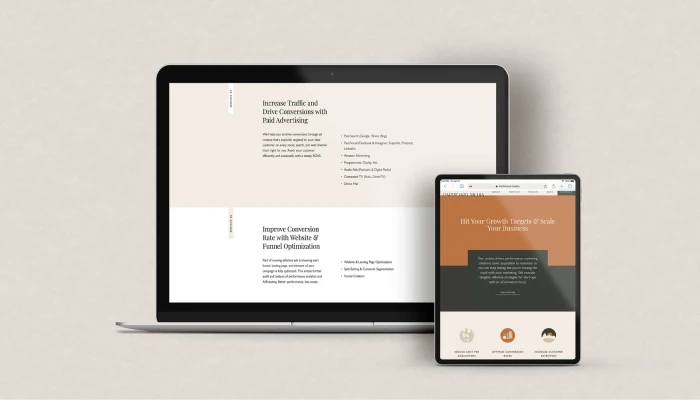Hello!
Emails are the backbone of any professional conversation. These are the formal ways where you talk business without memes or anything else that is casual or not important.
As it is understood that emails are important, so important are email signatures. Email signatures are like a list of information about you, your organization, your work profile, a contact link, and a photo or logo of you or your business.
It would help if you looked forward to creating an email signature. Before creating an email signature, you can do a little research regarding how to create and what type of email signature template will fit your requirement per your business, work profile, and recipients.
Take a Look ideal Email Signature Template
Now, look at an ideal email signature template; what information should you stuff in when creating an email signature for yourself?
Your email signature should include the following:
- Your full name
- The designation, department (affiliation info)
- Secondary contact info.
- Social profile icons (avoid links, use icons instead)
- Call to action (CTA)
- Booking links
- Legal requirements/ disclaimers (if any)
- Photo or logo
- Pronouns
Now let’s have a detailed look at this email signature template:
1. Your Full Name
 This is, as you understand already, the primary requirement. Your recipient, whom you are approaching via email, should know whom and where the email is from, and providing this information is the purpose of creating email signatures.
This is, as you understand already, the primary requirement. Your recipient, whom you are approaching via email, should know whom and where the email is from, and providing this information is the purpose of creating email signatures.
Make sure you write your name in a proper font and size to grab the reader’s attention before anything else in the email.
2. Designation/ department (affiliation info)
You must mention your firm and your designation in it, as it adds weight to your signature. If you are working in a renowned organization, it will not only make the recipient more attentive towards your mail but also make them take you seriously. So, if you’ve got perks, use them.
For example, if you are a co-founder of a business, you will write your designation along with the name of your business just below your name. See the example given below:
Your Name
Co-founder, your firm’s name
3. Secondary contact info
 Secondary contact info is another way a reader of email can reach you out if you are unavailable on email for some reason. It may include a contact number, fax or any other means of communication you prefer.
Secondary contact info is another way a reader of email can reach you out if you are unavailable on email for some reason. It may include a contact number, fax or any other means of communication you prefer.
Also, if you want to grow your roots apart from the current firm through which you are connecting to your recipients, secondary contact info will help you with that.
4. Social profile icons
Social media is a part of our lives in this online era. Social media helps make people know about your work; you can easily find and connect with like-minded people who need your services and with whom you can work.
So, adding social media handles to your email signature template is a good idea. But the point to be kept in mind here is that you should insert your social profile icon instead of the links because you want to fill your email signature with all the info possible, but you want it to look neat and organised.
Also, keep your social media pages updated if you add them to your signature.
5. Call to action (CTA)
 Adding a CTA in your email signature is also a clever idea. Your CTA should look subtle and not like an advertisement. Also, When you want to update your CTA to align with a new business goal, please choose a new CTA and update it accordingly.
Adding a CTA in your email signature is also a clever idea. Your CTA should look subtle and not like an advertisement. Also, When you want to update your CTA to align with a new business goal, please choose a new CTA and update it accordingly.
For creating a visually appealing and brand-consistent CTA, consider using tools provided by Tailor Brands. They offer a variety of branding solutions that can help ensure your email signature aligns perfectly with your overall brand image
6. Booking links
If you want your clients to get your access quickly, you should add booking links to your email signature so that they can fix a meeting with you as per your calendar space and their convenience.
Sometimes people want to reach out to you but need a proper channel, and booking links can help you both with that. So, consider adding booking links to your signature to make it more useful. It is a philosophical idea.
7. Legal requirements/ disclaimers (if any)
 Sometimes you are in such a field where an email sent to a recipient is entirely confidential, and you don’t want it to be shared with someone unauthorized, so there comes the role of a disclaimer.
Sometimes you are in such a field where an email sent to a recipient is entirely confidential, and you don’t want it to be shared with someone unauthorized, so there comes the role of a disclaimer.
You can add a legal disclaimer to the email stating the requirements. For example, you can write that this email is confidential, and if you think you are not the correct recipient to receive this, please reply and then delete the mail as it is a hidden text and implies copyright. It generally happens in the defence, finance, legal and insurance industries.
Apart from that, sometimes we receive emails from some sites with a disclaimer that this is a system-generated message and do not reply to this.
8. Photo or logo
A picture will add significant value and dimension to your email signature. You will be more influential to people with a photo of yours besides your firm’s logo design or your name. It will draw their attention quickly towards the message as they will consider the person or company along with the text.
9. Pronouns
If you have a gender-neutral name or you are not using your photo in the signature, you can add pronouns according to your gender, like he/him or she/her, so that if the reader writes you back, they would have an idea of whom they are connecting with.
 Now along with these, a few things are there that should be noted to make a pro email signature:
Now along with these, a few things are there that should be noted to make a pro email signature:
- Use design hierarchy; write your name, then your designation, and then your firm’s name.
- Use space dividers
- Use colors and keep them simple and consistent. Make them in sync with the colors of the logo or picture you inserted
- Include international prefix to your contact numbers
- Make the links trackable.
- Make your design mobile-friendly..
Conclusion
 To sum it all up, to create an email signature, you have to put the right things in the right places. Use design hierarchy while writing name, designation, and firm.
To sum it all up, to create an email signature, you have to put the right things in the right places. Use design hierarchy while writing name, designation, and firm.
Add relevant contact details, booking links, an image, or a logo mentioning the disclaimer and pronouns, keep a check on the colors you use, and you are good to go.
Thank you!
Join us on social media!
See you!






